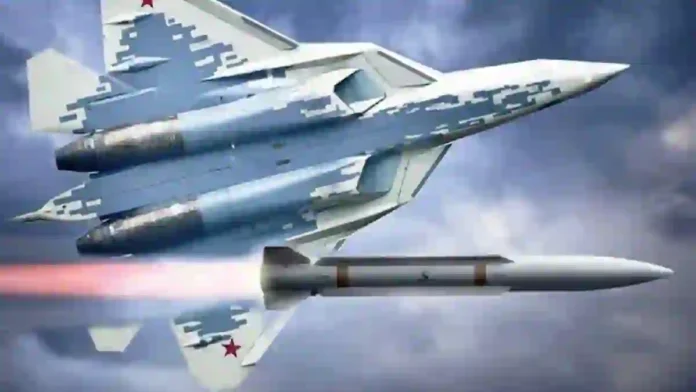India’s airpower modernisation is increasingly focused on technologies that leapfrog conventional combat standards. The potential pairing of Russia’s Su-57E fifth-generation stealth fighter with the 3M22 Zircon hypersonic missile is being projected as one such game-changer.
This combination could give the Indian Air Force (IAF) a stealth-hypersonic strike package that very few militaries in the world can field.
Read- RAFALE DEAL: The First 18 Rafale Fighters To Come Off-The-Shelf With A Shorter Timeline
The Zircon missile, capable of reaching speeds of Mach 8–9, represents one of the most advanced hypersonic weapons under development. With a quoted range of up to 1,000 kilometres, Zircon can engage targets such as warships, aircraft carrier strike groups, and fortified ground installations. Its extreme speed leaves current air-defence networks unable to respond effectively, reducing reaction times to near zero.
For the IAF, which already operates a formidable Su-30MKI fleet, fifth-generation stealth aircraft remain a missing piece. The Su-57E, an export variant of Russia’s Su-57 Felon, offers low observable design, sensor fusion, and internal weapons carriage. But when paired with a hypersonic missile like Zircon, the platform’s role transforms from purely air dominance to long-range first-strike capability.
Operationally, the advantages of this pairing lie both in stealth and stand-off strike. A Su-57E equipped with Zircon could approach contested airspace undetected and launch a Mach 8+ strike missile from hundreds of kilometres away, without ever entering the engagement zone of hostile air defences. This would tilt the balance in maritime strike missions, particularly against naval assets deployed in the Indian Ocean.
Read- Prime Minister Narendra Modi Unveils ‘Indian Armed Forces Vision 2047’ Document
The psychological edge of fielding such a capability is equally significant. For adversaries, facing a stealth aircraft carrying ultra-fast hypersonic missiles complicates deterrence and war-planning. It also puts India in the elite club of nations able to integrate fifth-generation aviation with next-generation missile technology.
Analysts note that India’s consideration of the Su-57E should not be evaluated solely on the aircraft’s performance, but on such integrative advantages. If New Delhi negotiates access to the Zircon missile alongside the platform, it could gain a decisive multi-domain strike capability — one that even China, despite its advances in hypersonic systems, does not yet fully command.
In the long view, acquiring Su-57E and Zircon would represent a dual boost: filling the stealth fighter gap in the IAF’s fleet while also giving India an operational hypersonic strike capacity. It would mark a clear step toward preparing for future air–sea warfare environments where survivability and speed define outcomes.
IDN (With Agency Inputs)
Agencies




